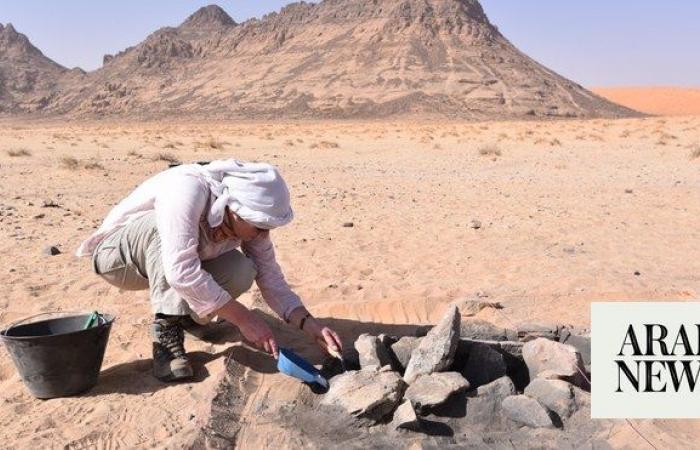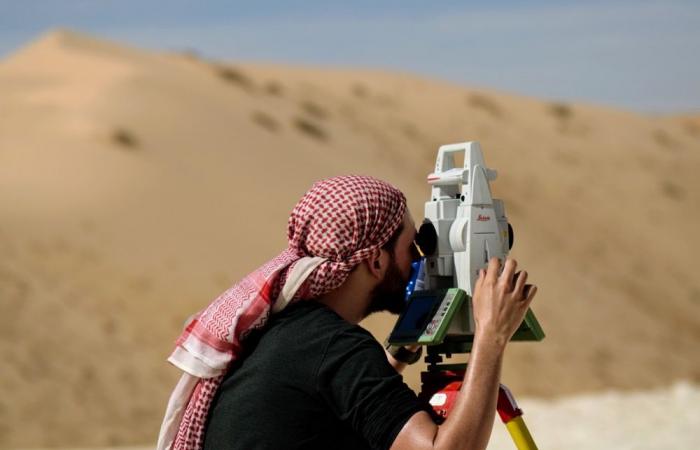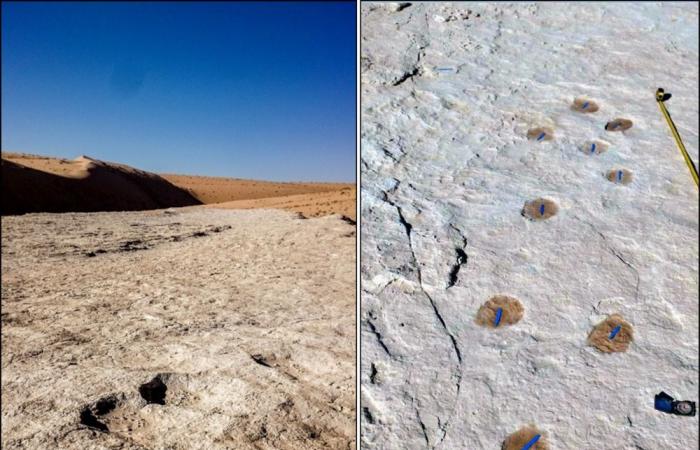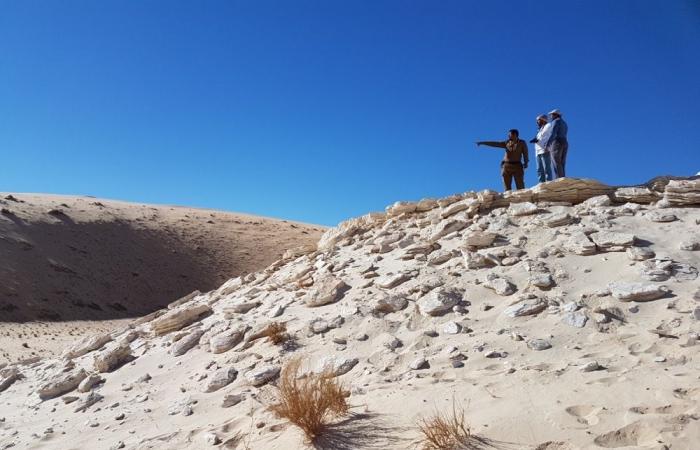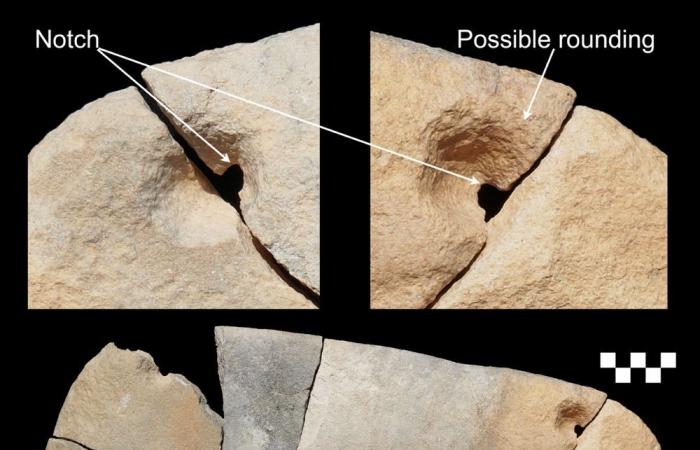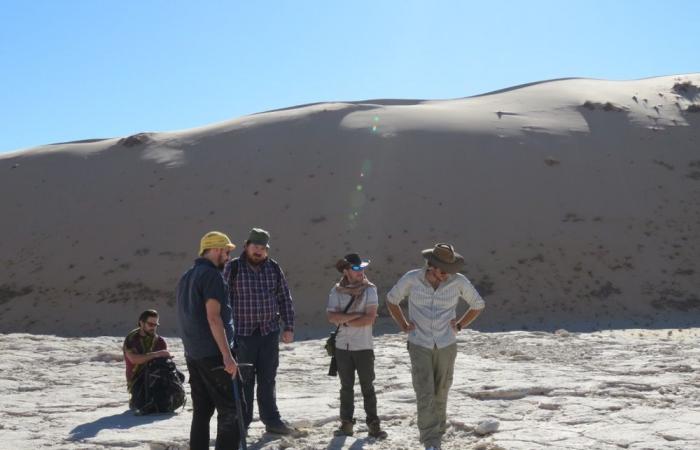Thank you for reading the news about How the discovery of 7,000-year-old stone tools cements Saudi Arabia’s place on the world heritage map and now with the details
Jeddah - Yasmine El Tohamy - How the discovery of 7,000-year-old stone tools cements Saudi Arabia’s place on the world heritage map
LONDON: To the untrained eye, the handful of broken stones found half-buried in an ancient hearth, situated on the banks of a long-vanished lake in Saudi Arabia’s Nefud desert, appear to be little more than that — remnants of a campfire built by a wandering band of Stone Age humans who passed through some 7,000 years ago.
But archeologists, armed with the results of microscopic examinations of wear patterns and analysis of the “micro-residue” of plants found on the stones, have pieced together the fragments to reveal that what ended up as a makeshift fireplace actually started out as tools for grinding plants, possibly grains for making bread, bones, for the extraction of marrow, and pigments, used to make rock art.
This insight into the lives of the Neolithic people who lived in the heart of Arabia between 5200 and 5070 B.C., published in the journal Plos One, is among the latest in a series of discoveries made since 2011 at Jebel Oraf, a site near the Jubbah oasis on the southern edge of the Nefud desert, some 80 km northwest of Hail.
Together, the insights gleaned by archaeologists from half a dozen countries, including Saudi Arabia, working in conjunction with the Saudi Commission for Tourism and National Heritage and the Ministry of Culture, have added invaluable pieces to the jigsaw of prehistoric life in the land that would in time become the Kingdom of Saudi Arabia.

For the archeologists, the application to grinding tools of so-called use-wear analysis, a technique until now rarely applied to archeological materials from the Arabian Peninsula, “can inform us on the manufacture, use, and re-use of objects, which in turn provides insight into the subsistence, economy, and art of the people who produced them.”
The apparently common use of grinding tools found in the vicinity of Jebel Oraf “suggests plants and plant foods were economically important for Neolithic people who have previously been characterized as hunter-herders.”
In addition, “the production of bread-type foods, whether from wild or domesticated plant sources, and the use of plant fibers in crafts such as basketry and rope making would accord well with a highly mobile lifestyle requiring transportable foodstuffs.”
Two of the tools also showed signs of pigment processing, providing “a crucial link to rock art production in the area, which includes some painted Neolithic panels of domesticated cattle.”
Maria Guagnin, an archeologist at the Max Planck Institute of Geoanthropology in Germany and a co-author of the paper, has been working on archeological sites in the Nefud for the past 10 years.

“What we now know is that northern Saudi Arabia was a fairly busy place in the Neolithic,” she said. “This was not just a few people who managed to survive and light a fire here and there. There was a substantial, hardworking population that made a lot of rock art and monumental stone structures.”
Northern Arabia is littered with thousands of neolithic monuments, such as mustatils, mysterious rectangular-shaped structures, sometimes hundreds of meters in length, with a presumed religious or ceremonial purpose.
A stroll across the apparently barren landscape in the shadow of Jebel Oraf today reveals a series of hundreds of small mounds — each one a hearth built and used briefly over 7,000 years ago.
The practiced eye can also make out the ghostly echo of a now vanished “paleolake,” where human herders would have paused to water and feed their cattle, to hunt animals drawn to the water, such as gazelle and ostrich, and to butcher and cook meat.
“At some point at the end of the Stone Age, the climate here became a lot wetter, grasslands spread and lakes formed,” said Gaugnin.
“We think that the lake was groundwater-fed and was perhaps the result of extreme rainfall events. We can see that at one point, in about 5300 BCE, there was a flooding event in which the water level of the lake was higher than normal.”
As a result, “the little piece of land where they liked to go and camp every year or two became inundated with water, which basically mixed up all existing fireplaces.
“And then the lakes shrank a bit after the rainfall stopped, and then the humans came back onto the same bit of land and put their hearths on top. So when you excavate a hearth, it’s in this matrix of lake sediments mixed with older hearths. For some reason people kept returning to this particular place in the landscape.”
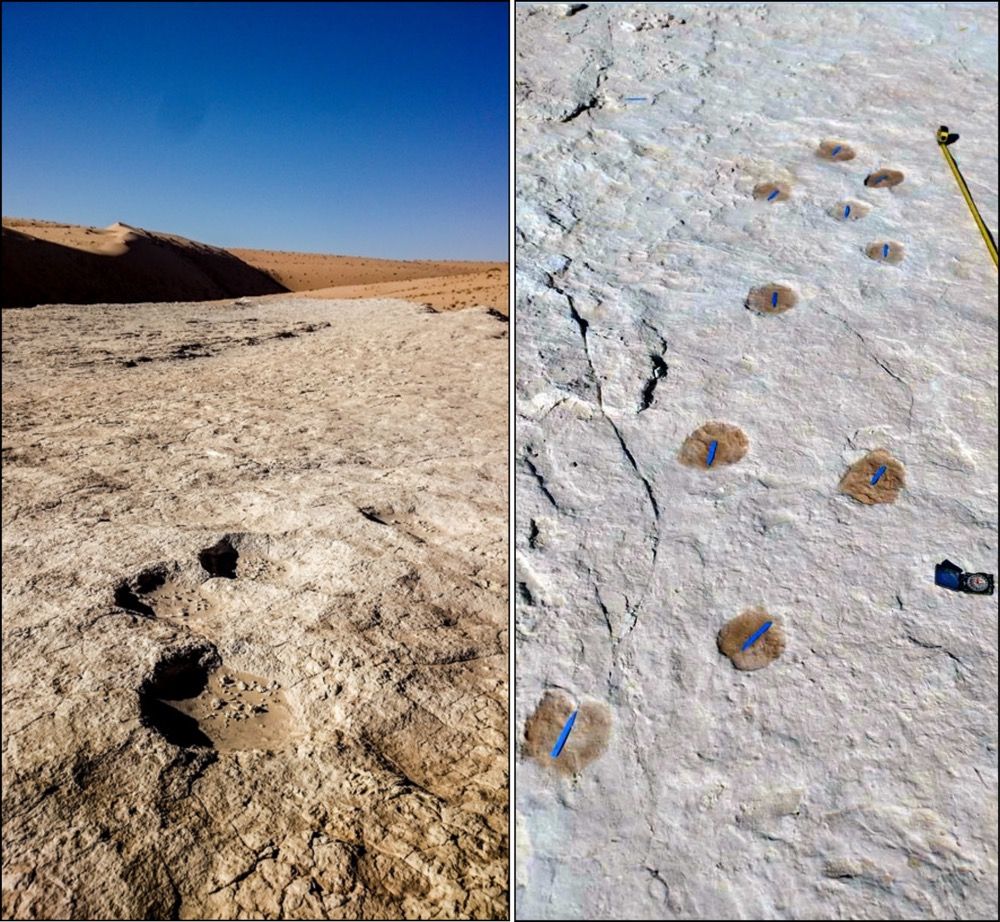
As fascinating as the latest finds from the Nefud are, the discoveries at Jebel Oraf come from a relatively recent period in the prehistory of Saudi Arabia.
A wealth of archeological evidence has been unearthed in recent years, which shows that Saudi Arabia’s prehistoric past extends back to almost the dawn of human time, when the early humans first emerged out of Africa.
Over the millennia their descendants left behind traces of their evolution and passing, from simple tools, tombs and rock art to the mysterious stone structures known to the Bedouin as “the work of the old men,” which together have allowed archaeologists to piece together a picture of a time before the great deserts, when large mammals roamed rich savannahs watered by great rivers.
For a long time, no credence was given in archaeological circles to the idea that the Arabian Peninsula may have been one of the first regions on earth to be settled by early humans outside of Africa.
“(But) if they got to Australia, then why would they not get to Arabia?” said Guagnin. “We forget they had to go somewhere first, and I think we sometimes underestimate these ancestors. I think they were quite a capable bunch, and as time goes on, we’re going to find more and more evidence of that.”
Saudi Arabia is already becoming well known for its headline archeological sites, such as Hegra, the city of ancient tombs carved out of the rocks near modern-day AlUla by the Nabataean civilization 3,000 years ago, listed by UNESCO as a World Heritage site in 2008.
As it opens up to tourism, the country is also gaining recognition for one of the largest collections of ancient rock art in the world. In 2015 two sites near Jubbah in Hail province, the world’s largest and most impressive collection of Neolithic petroglyphs, were also adopted by UNESCO for their “outstanding universal value.”
But one of the most startling finds in recent years rewinds the story of Saudi Arabia and humankind itself almost back to its beginnings.

In 2017 an Australian student at the University of New South Wales struck archeological gold while carrying out PhD fieldwork for a thesis with the unpromising title “A taphonomic and zooarchaeological study of Pleistocene fossil assemblages from the western Nefud desert, Saudi Arabia.”
What Mathew Stewart found were human footprints alongside the tracks of animals including elephants and camel-like creatures, preserved in what was once mud on the shores of a long-vanished lake.
Such traces, found only occasionally around the world, are few and far between. Just three years earlier, human footprints discovered in a cave in Romania were found to be 36,500 years old, and were acclaimed as the oldest in Europe, and probably the whole world.
But Stewart’s footprints turned out to be 120,000 years old — at the time not only the oldest known evidence of the presence of Homo sapiens on the Arabian Peninsula, but also “an arrival into the Arabian interior contemporaneous with the earliest securely dated arrival of Homo sapiens outside Africa.”
“To date the footprints we used a method called optically stimulated luminescence (OSL) dating,” said Stewart. “This method essentially takes grains of minerals like quartz and exposes them to light, with the amount of energy given off being used to calculate the last time the sediments were exposed to sunlight, therefore providing an age of burial.
“Luckily at our site, the footprints were essentially sandwiched between different lake sediments. Therefore, we could apply this dating method to obtain an age of the sediments both under and overlying the footprints, to get an approximate age.”
The first day at the ancient dried lake, which the team named Alathar — the Arabic word for trace — “was quite the rollercoaster,” he recalled.
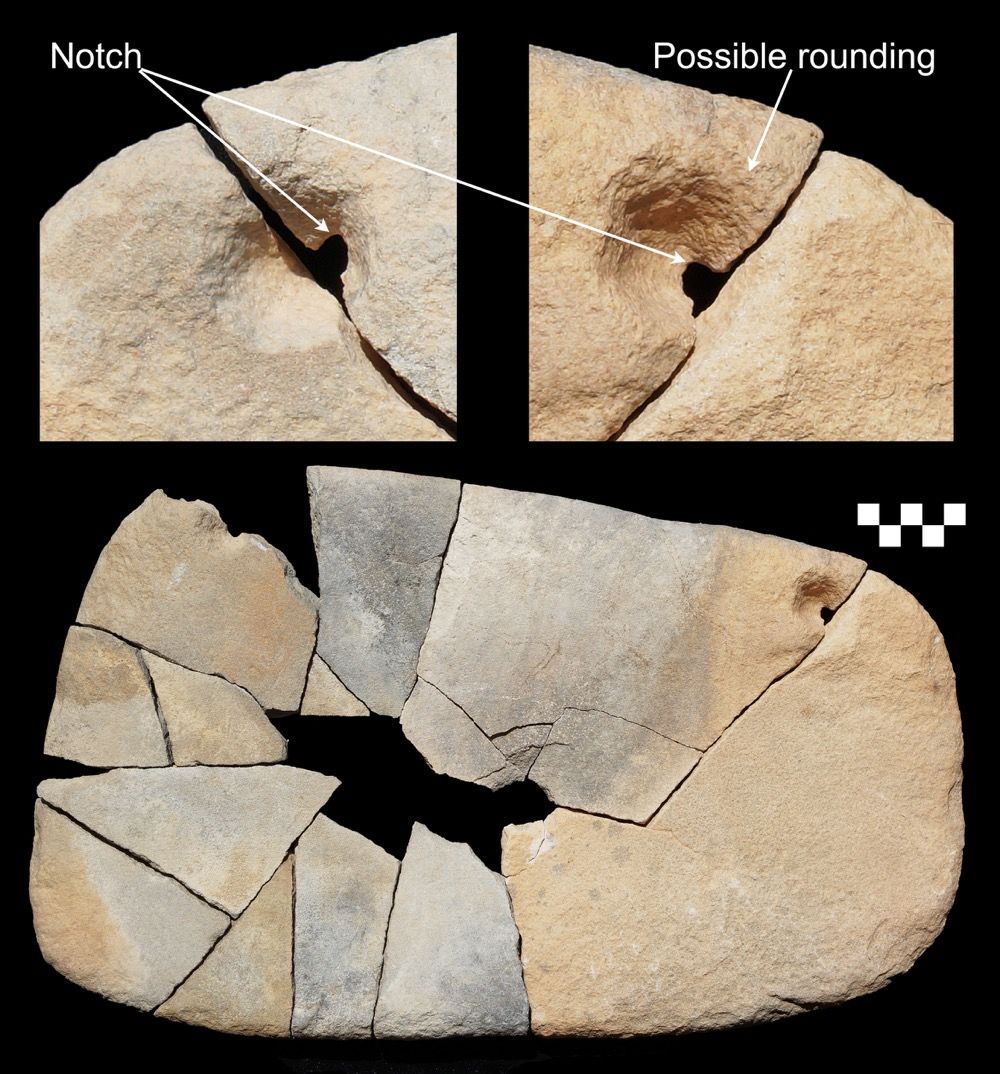
“We were investigating the palaeolake in search of stone tools and fossils. After some time, one of our colleagues commented that the large circular impressions in the ground resembled those of elephant tracks.
“He was, of course, correct, and once we all got our eye in for looking for footprints we realized that the entirety of the lake deposit was covered in footprints, which included elephants, equids, and large bovids.
“As if that wasn’t exciting enough, right at the very end of the first day, as we were packing the cars, another colleague discovered three of the human footprints at the very edge of the lake deposit. Naturally, we spent the next days investigating this incredible site, documenting footprints and sampling the lake deposits for dating.”
Gaugnin believes there is much more to come, thanks to a surge of interest both about and within Saudi Arabia, allowing the Kingdom to claim its rightful place on the archeological map of the world.
“So much has changed in the past 10 or 12 years,” she said. “We’ve basically gone from knowing hardly anything about Saudi Arabia’s ancient past to realizing that there’s so much there.
“I and my colleagues have realized this for a while, but now the rest of the world is starting to, as well.”
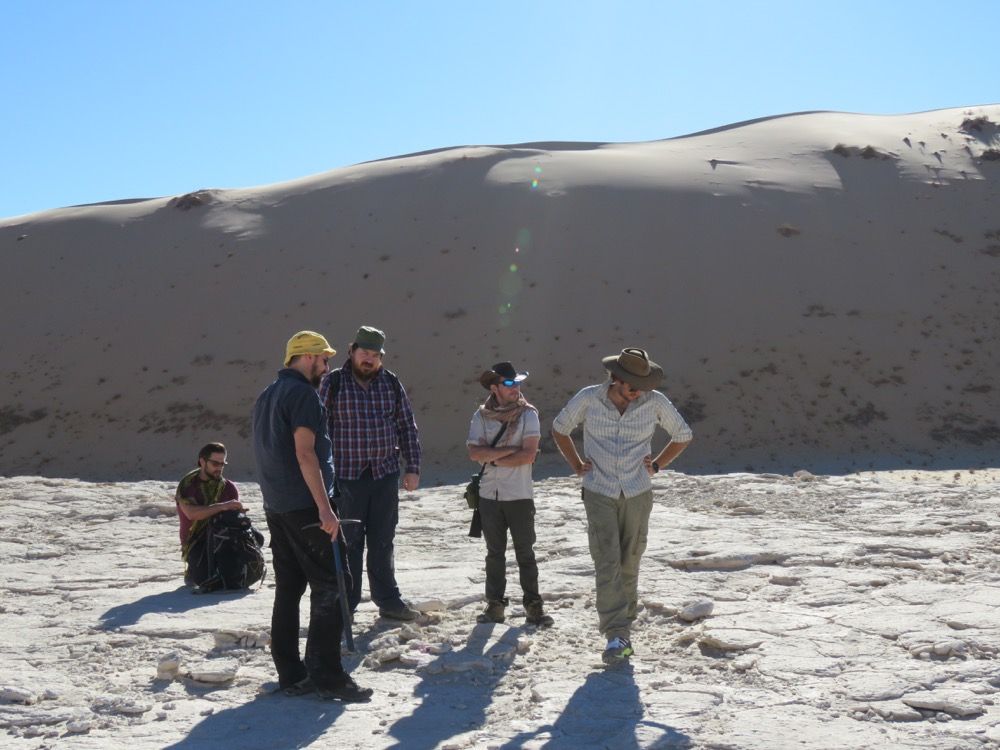
She added: “(In the past) I have had applications for grants turned down where the reviewer comments: ‘There’s nothing to find in Saudi Arabia.’ I think these days nobody would dare say that.
“There is more and more information coming out, and awareness that there is a wealth of archeology in Saudi Arabia is spreading.”
Until recently, Guagnin was accustomed to going to conferences and seeing maps of the region on which known archeological sites were marked in “a beautiful crescent-shaped distribution across the top of the region, with almost nothing toward the south.
“But just because there’s an empty spot on a distribution map in archeology it doesn’t mean it is actually empty. In the case of Saudi Arabia, it was because we hadn’t looked yet. The absence of evidence is not evidence of absence.
“Well, we’re looking now, and we are finding, and I suspect a lot of the archeological maps are going to be changing over the next five to 10 years.”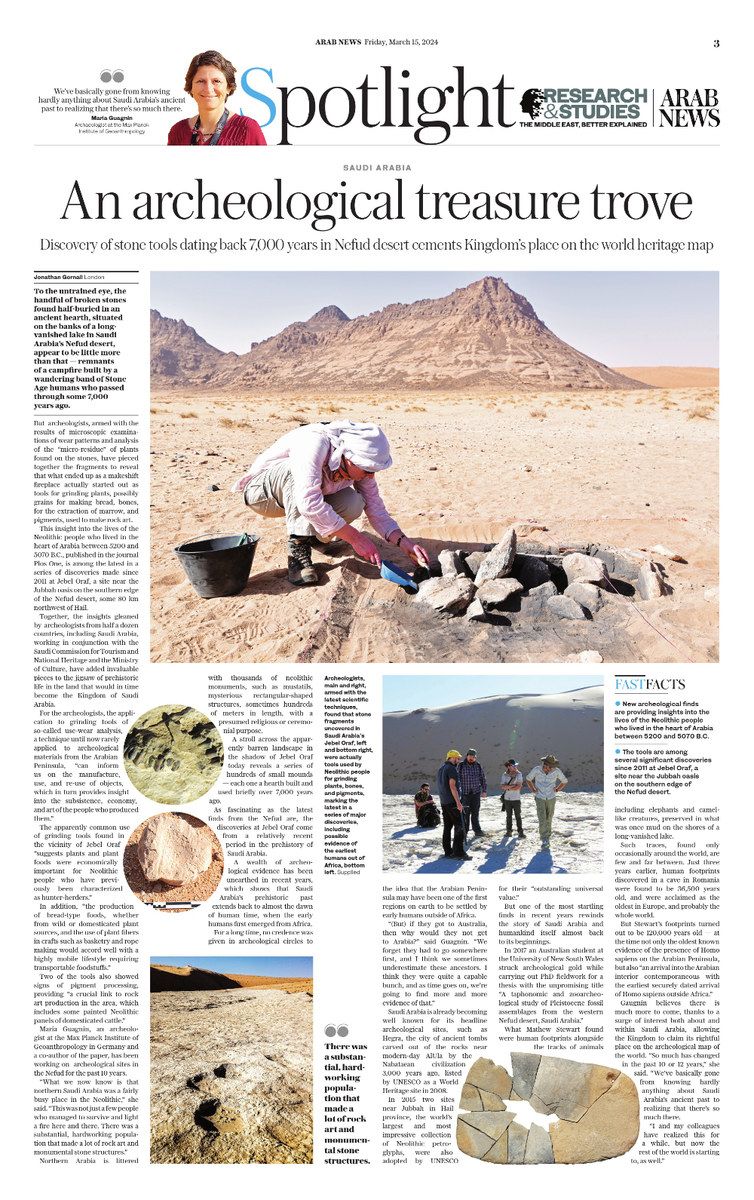
These were the details of the news How the discovery of 7,000-year-old stone tools cements Saudi Arabia’s place on the world heritage map for this day. We hope that we have succeeded by giving you the full details and information. To follow all our news, you can subscribe to the alerts system or to one of our different systems to provide you with all that is new.
It is also worth noting that the original news has been published and is available at Arab News and the editorial team at AlKhaleej Today has confirmed it and it has been modified, and it may have been completely transferred or quoted from it and you can read and follow this news from its main source.

